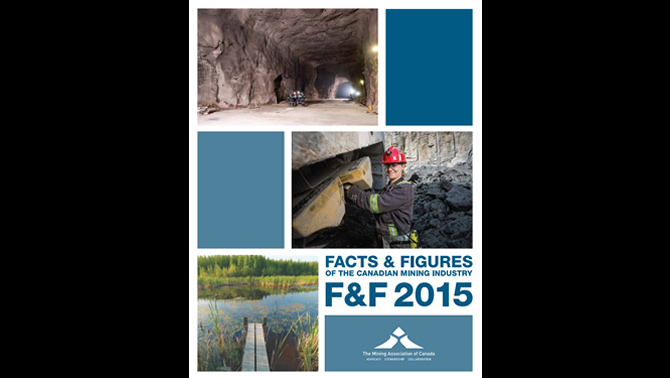Mining’s contributions to Canada strong despite downturn

A new report from the Mining Association of Canada reveals that despite market volatility, the mining industry's contribution to Canada remains strong. — Photo courtesy mining.ca
Despite market volatility and downward pressure on commodity prices, the mining industry’s economic contributions to Canada remain strong during the downturn, according to a new report from the Mining Association of Canada (MAC).
“The findings of this report serve as a reminder that even during a downturn, the mining industry plays a vital economic role in Canada’s rural and remote communities and in our largest cities,” said Pierre Gratton, President and CEO, MAC.
MAC’s latest annual Facts & Figures report revealed the industry directly employed more than 375,000 people in 2014. The mining industry also remains the largest private sector employer of Aboriginal peoples in Canada on a proportional basis, with employment levels poised to increase as the industry develops. The report also found the mining industry is deeply interconnected to other sectors of the Canadian economy, with more than 3,700 companies supplying goods and services to the Canadian mining industry. In 2014, Canada’s mining sector contributed $57 billion to the national GDP, up from $54 billion in 2013, and mining industry exports continued to account for upwards of 20 percent of the Canadian total.
The report notes several policy areas that are essential to securing the estimated $140 billion in potential new mining investments that could come to fruition over the next decade in Canada. “A downturn is not a time for governments to lose focus on mining," added Gratton. "There are actions that can be taken now so that Canada is well positioned to attract new investment and seize growth opportunities when the cycle improves, as it invariably will.”
These policy areas include:
- Ensuring the regulatory process is robust and efficient, and includes meaningful consultation with Aboriginal communities and industry stakeholders;
- Addressing the costs of operating in remote and northern Canada where infrastructure is lacking. The introduction of new tax measures and/or a northern-specific fund within the proposed Canada Infrastructure Bank can help facilitate the building of critical infrastructure;
- Enhancing funding for Aboriginal skills training initiatives to enable Aboriginal peoples to access well-paying and highly-skilled jobs in mining; and
- Supporting the industry’s innovation priorities to facilitate continuous improvement in the sector’s environmental and health and safety performance.
To download a copy of Facts & Figures 2015, please visit www.mining.ca/facts-and-figures-2015.




